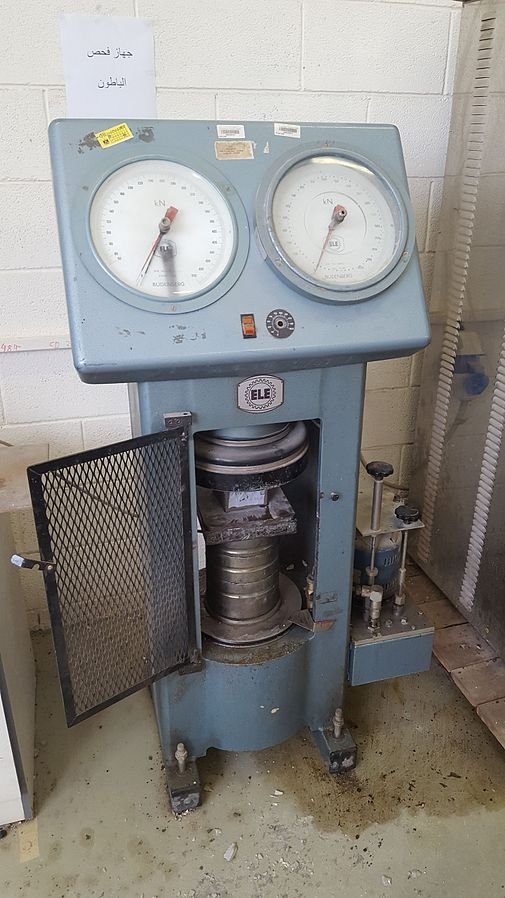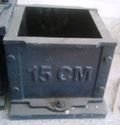Objective and significance: –
Compressive strength of concrete is capability of the concrete to resist compressive force. Concrete is good in compression and steel is good in tension. That is why concrete and reinforcement of steel is good combination to give strength to structure. Compressive strength is the main property of the concrete. So knowing concrete compressive strength value is very important.
Concrete is combination of cement, sand, aggregates, water, admixtures etc. Every material in concrete have different importance and properties. If mixing ratio of these properties changes then ultimately quality of concrete changes. As Compressive strength is important property then calculating it is very important.
Aim: –
To determine compressive strength of the concrete cube using Cube testing Machine (CTM). Concrete compressive strength varies with age of concrete cube. Its 50% in 3 days, 66% in 7 days, 90% in 15 days and 100% in 28days. So knowing age of the concrete is important.

Factors affecting Compressive strength: –
- Water/cement ratio: – It should be optimum. Too less and too more can reduce Strength.
- Ingredients of cement: – Every ingredient has different property.
- Weather condition: – Cold weather is good, Too cold and too hot need special treatment.
- Age of Specimen: – Concrete strength increases with respect age as shown in above chart
- Curing: – Curing prevent excessive heat of hydration.
- Shape and Size of Specimen: – Shape should be perfect. Slender or flaky specimen does not give accurate calculations.
- Rate Of Loading: -Rate of loading should be optimum.
- Manner of mixing: – Mixing should be done as per design.
Apparatus: –
Compressive Strength Machine (CTM): – The testing machine may be of any reliable type, of sufficient capacity for the tests and capable of applying the load at the specified rate. The permissible error shall be not greater than ± 2 percent of the maximum load.

Cube moulds: – To cast testing specimen. Size 150mm x 150mm x 150mm

Tamping Rod: – For compacting concrete cube at the time of casting.

Procedure: –
- All materials shall be brought to room temperature, preferably 27 ± 3 oC before the test.
- Samples of aggregates for each batch of concrete shall be of the desired grading and shall be in an air-dried condition. The cement samples, on arrival at the laboratory, shall be thoroughly mixed dry either by hand or in a suitable mixer in such a manner as to ensure the greatest possible blending and uniformity in the material. Care being taken to prevent intrusion of foreign materials.
- The proportions of the materials, including water, in concrete mixes used for determining the suitability of the materials available, shall be similar in all respects to those to be employed in the work.
- The quantities of cement, each size of aggregate, and water for each batch shall be determined by weight, to an accuracy of 0.1 percent of the total weight of the batch.
- The concrete shall be mixed by hand, or preferably, in a laboratory batch mixer, in such a manner as to avoid loss of water or other materials. Each batch of concrete shall be of such a size as to leave about 10 percent excess after moulding the desired number of test specimens.
- Each batch of concrete shall be tested for consistency immediately after mixing, by one of the methods described in IS:1199-1959. Provided that care is taken to ensure that no water or other material is lost, the concrete used for the consistency tests may be remixed with the remainder of batch before making the test specimens. The period of re-mixing shall be as short as possible yet sufficient to produce a homogeneous mass.
- Test specimens cubical in shape shall be 15 × 15 × 15 cm. If the largest nominal size of the aggregate does not exceed 2 cm, 10 cm cubes may be used as an alternative. Cylindrical test specimens shall have a length equal to twice the diameter. They shall be 15 cm in diameter and 30 cm long. Smaller test specimens shall have a ratio of diameter of specimen to maximum size of aggregate of not less than 3.
- The test specimens shall be made as soon as practicable after mixing, and in such a way as to produce full compaction of the concrete with neither segregation nor excessive laitance. The concrete shall be filled into the mould in layers approximately 5 cm deep. In placing each scoopful of concrete, the scoop shall he moved around the top edge of the mould as the concrete slides from it, in order to ensure a symmetrical distribution of the concrete within the mould. Each layer shall be compacted either by hand or by vibration.
- The test specimens shall be stored in a place, free from vibration, in moist air of at least 90 percent relative humidity and at a temperature of 27° ± 2°C for 24 hours ± ½ hour from the time of addition of water to the dry ingredients.
- The ends of the specimen shall be capped before testing. The material used for the capping shall be such that its compressive strength is greater than that of the concrete in the core. Caps shall be made as thin as practicable and shall not flow or fracture before the concrete fails when the specimen is tested. The capped surfaces shall be at right angles to the axis of the specimen and shall not depart from a plane by more than 0·05 mm.
- The bearing surfaces of the testing machine shall be wiped clean and any loose sand or other material removed from the surfaces of the specimen which are to be in contact with the compression platens.
- In the case of cubes, the specimen shall be placed in the machine in such a manner that the load shall be applied to opposite sides of the cubes as cast, that is, not to the top and bottom.
- The axis of the specimen shall be carefully aligned with the center of thrust of the spherically seated platen. No packing shall be used between the faces of the test specimen and the steel platen of the testing machine.
- The load shall be applied without shock and increased continuously at a rate of approximately 140 kg/sq cm/min until the resistance of the specimen to the increasing load breaks down and no greater load can be sustained.
- The maximum load applied to the specimen shall then be recorded and the appearance of the concrete and any unusual features in the type of failure shall be noted.
Calculations and result: –
- The measured compressive strength of the cubes shall be calculated by dividing the maximum load applied to the cubes during the test by the cross-sectional area, calculated from the mean dimensions of the section and shall be expressed to the nearest 0.5 N/mm2. In determining the compressive strength, do not consider specimens that are manifestly faulty, or that give strengths differing by more than 10 percent from the average value of all the test specimens.
- The average 3 Days Compressive Strength : -__________N/mm2.
- The average 7 Days Compressive Strength : – __________N/mm2.
- The average 28 Days Compressive Strength : – __________N/mm2.